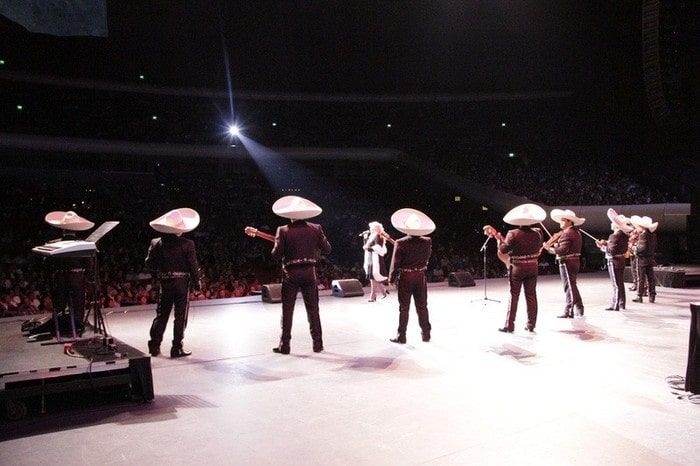The most representative musical genres and sounds of Mexico
Get to know the most representative genres and sounds of Mexican music, which is also part of a culture as diverse as its people.

Learn about the most representative genres and sounds of Mexican music, which is also part of a culture as diverse as its people.
Regional popular and folkloric
The popular song refers to the songs that the people handle in their present, that is to say, they are those songs that society accepts and sings but that in a short time can be forgotten and replaced by others. When one of these songs remains for years in the popular repertoire, sung with minor or major variations, it can be called a folk song, while the folk song is a tradition, and the folk song is usually a passing fad.
In the midst of the coming and going of troops and the confrontation between the peninsula, the Creoles, and the mestizos, Mexican music appeared: firstly, as an assimilation of the diverse literary and musical genres inherited from Spain; secondly, as a product of the concern to define itself as a people, and thirdly, as a mixture and amalgamation of the heterogeneous elements that were combined to make nationality possible.
The most representative songs of Mexico: Bésame mucho, Cielito lindo, El rey, La bamba, María bonita, Canción mixteca, El son de la negra, Guadalajara, Mi ciudad, Cucurrucucú Paloma, Sólo una vez, and Somos novios are part of Mexican culture, among others.
Marimba, the voice of Chiapas
There are indigenous villages that call it this way and in it, regional or folk music is played that links them to the sadness and happiness of their race. It is the instrument that vibrates with the sonorous name of Chiapas and transmits its greatness to all the confines of the Universe. Originally the marimba was a single keyboard, now it is a double keyboard and this innovation is exclusively from Chiapas and in San Bartolomé de los Llanos was where was designed. This invention gives these people the right to say that the marimba lives in the soul of the people.
Musical genres and sounds of Mexico
Norteño and Banda
From northeastern Mexico, popular music played by a group of norteños with accordion, bass, or pharaoh, with the addition of double bass or tololoche, drums, guitars, also includes tarola and occasionally saxophone. Both genres were adopted as cultural elements mainly in Sinaloa, Nayarit, Michoacán, and Guerrero.
Mariachi
From the west and north of Mexico, known worldwide, a musical group made up of three or more members who play the guitar, guitarron, violin, harp, and trumpets.
Corrido
It originated as a form of expression or a means of communication, an open voice among Mexicans, especially from the most repressed social classes. The vocalist accompanied by a guitar tells a story or anecdote; even today, love songs, stories of daily life, and chronicles of natural events are played.
Son
It is the most representative manifestation of Mexican traditional music, this genre is found in a great variety of regional styles from different geographical and cultural areas of the country. The sones are almost always played by groups with string instruments and percussion. Although the current classification of this music by region varies slightly, there are at least six modalities as the most representative of the genre: the sones of Tierra Caliente, the sones jaliscienses, the sones of the Costa Chica and Tixtla, the sones istmeños, the sones jarochos, and the sones huastecos.
Mexican night (noche mexicana)
Fiesta celebrated with the traditional Grito de Independencia (shout of independence) on the night of September 15th. People usually dress in typical clothing, such as sarapes, hats, shirts, dresses, among others. The place of the celebration is decorated with diverse objects of colors, predominating those of the flag: green, white, and red.
In this celebration, the atmosphere is very important because it is entertained with typical music such as mariachi, band, corrido, bombas, sones, and folk dances from different regions of the country. The food cannot be left behind because it also includes a wide variety of Mexican appetizers and typical drinks: pulque, tequila, mezcal, cacao, chocolate, pozole, and flavored waters, among others according to each state.




